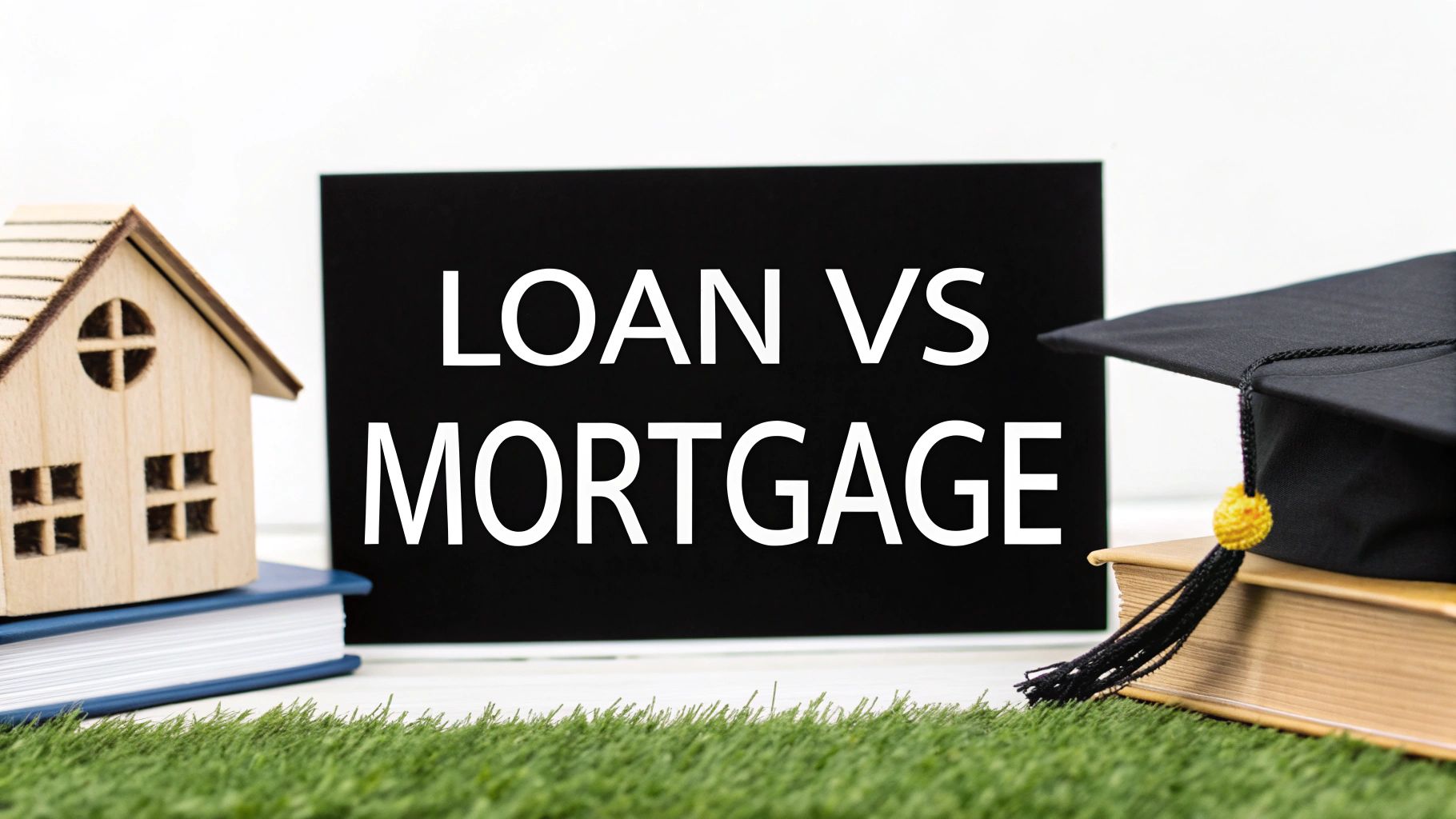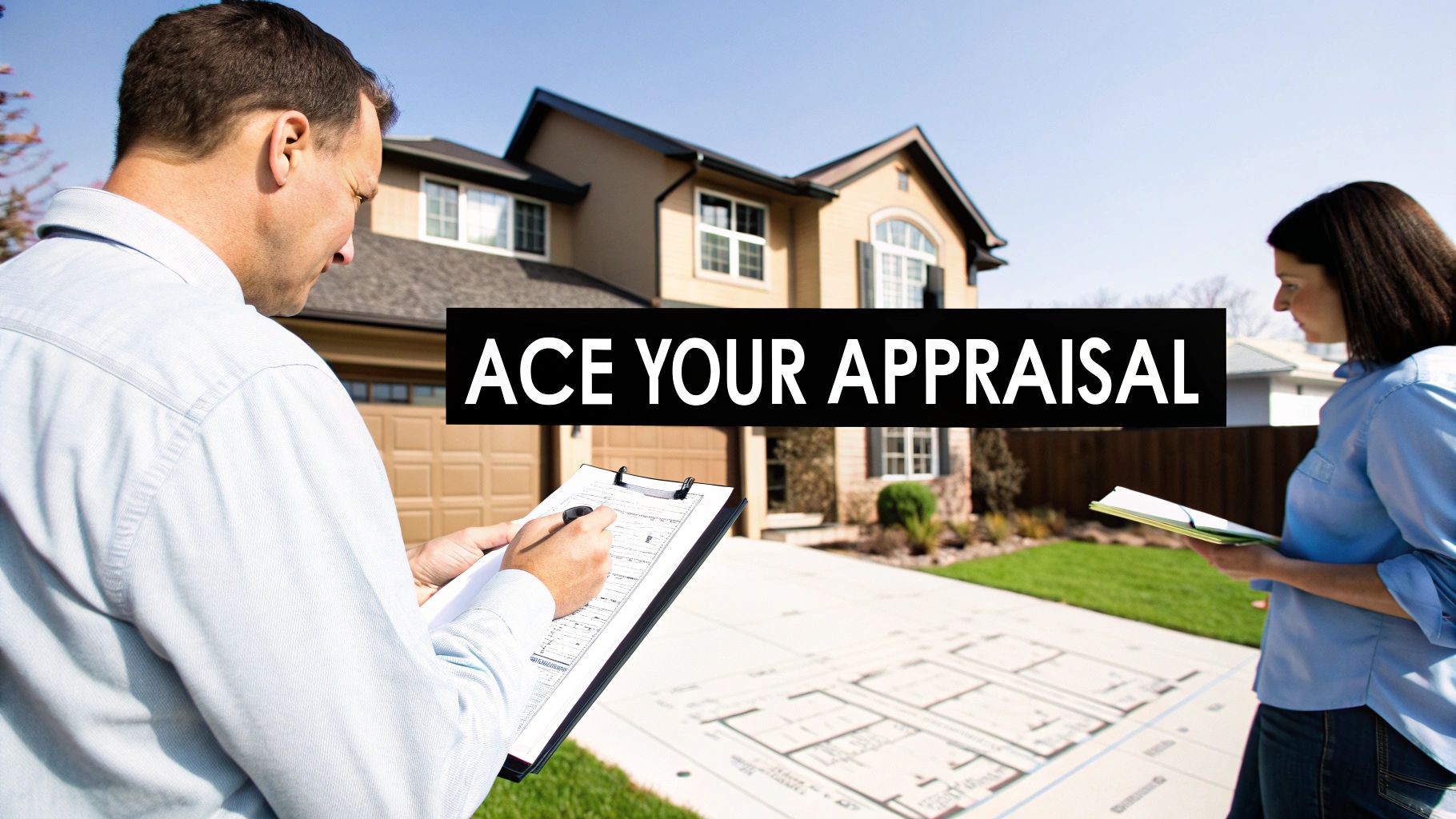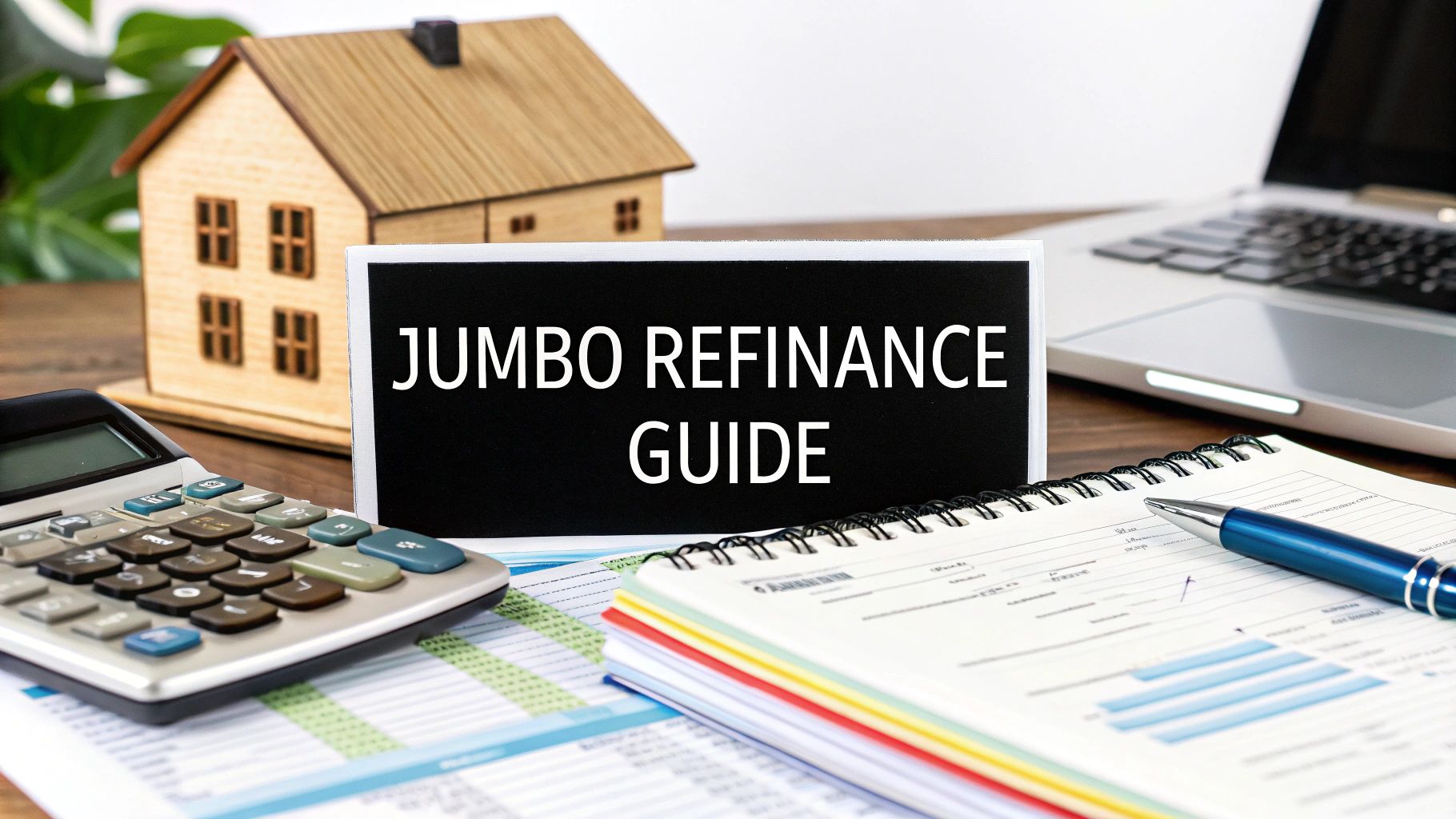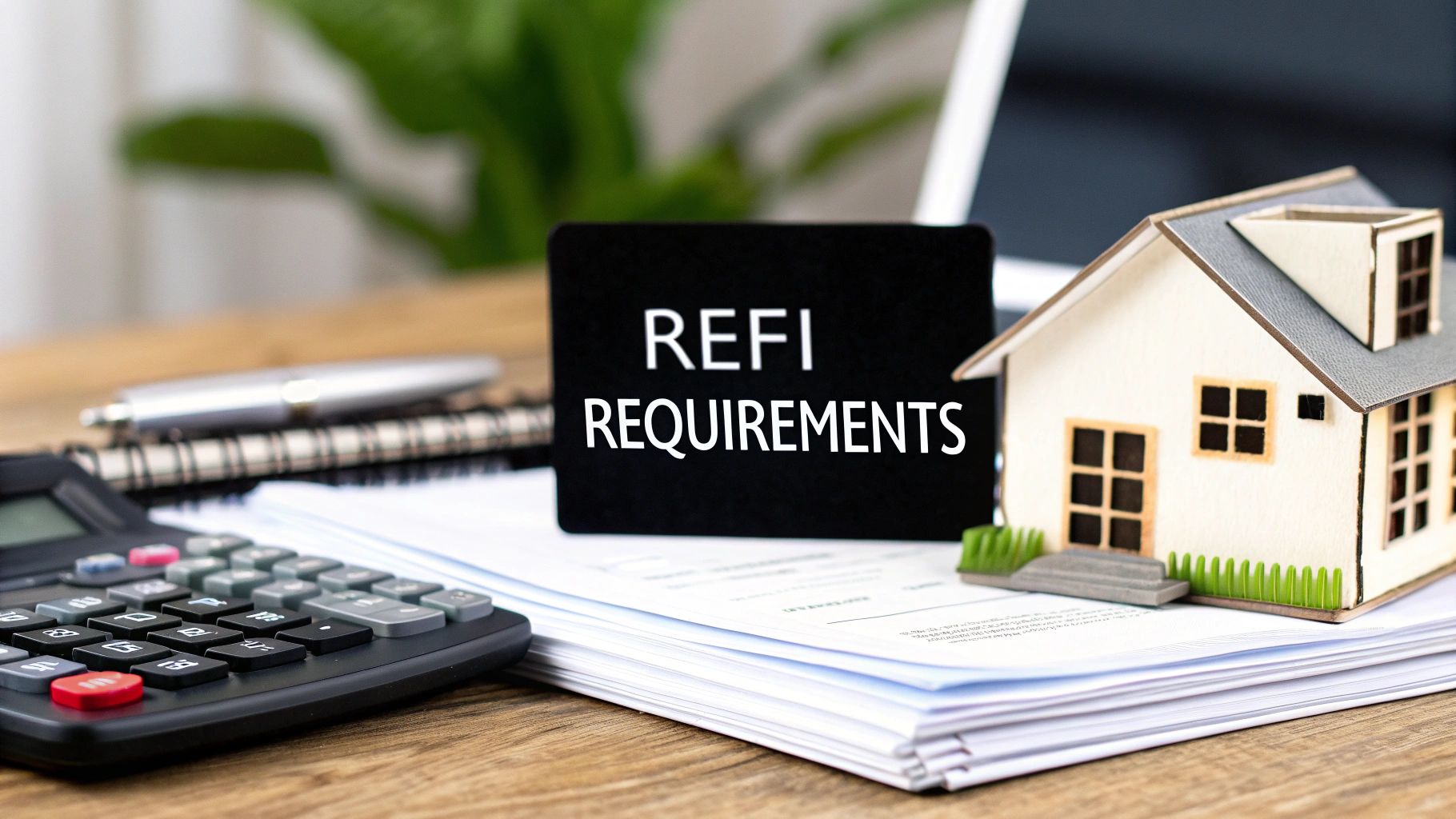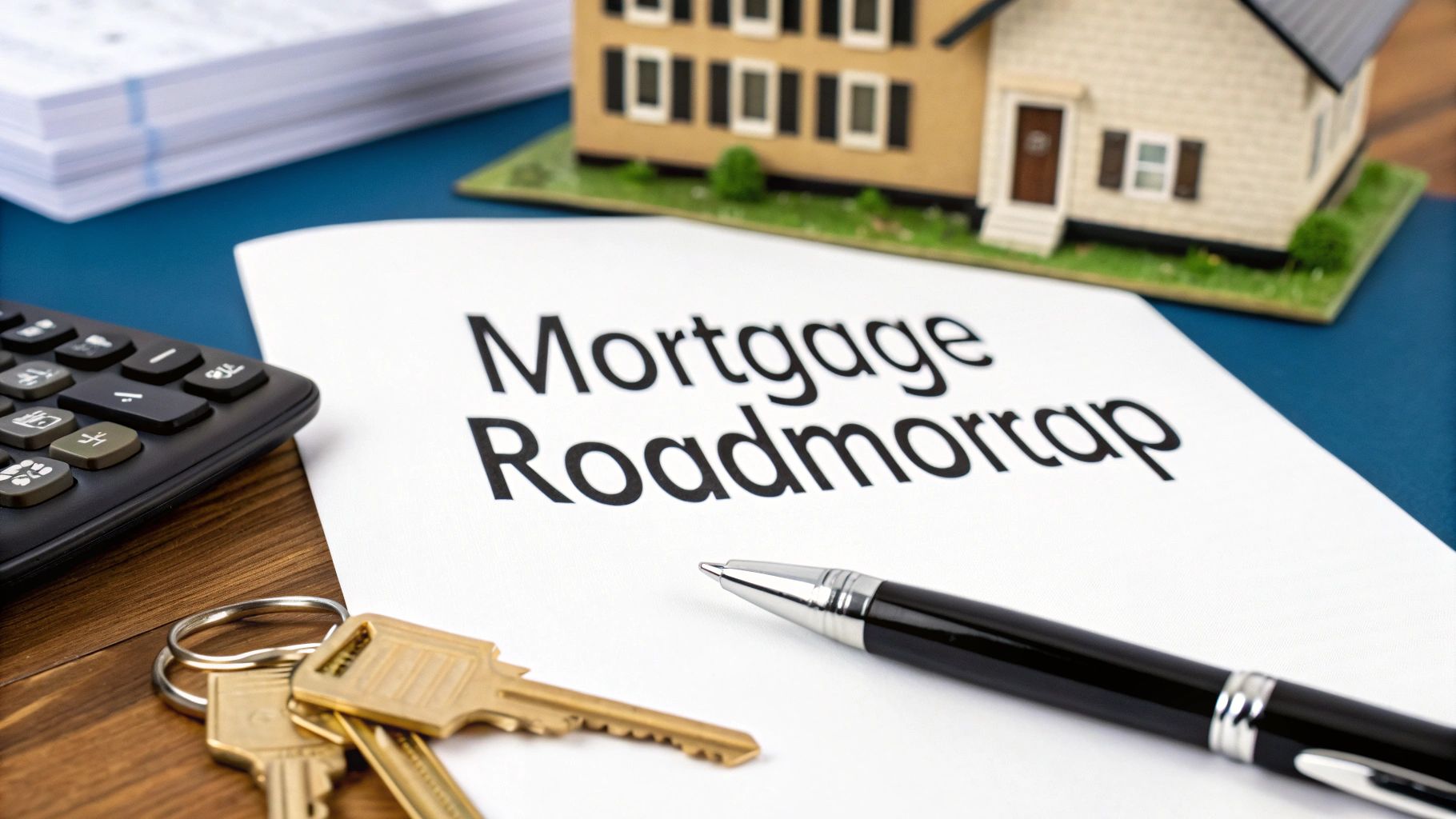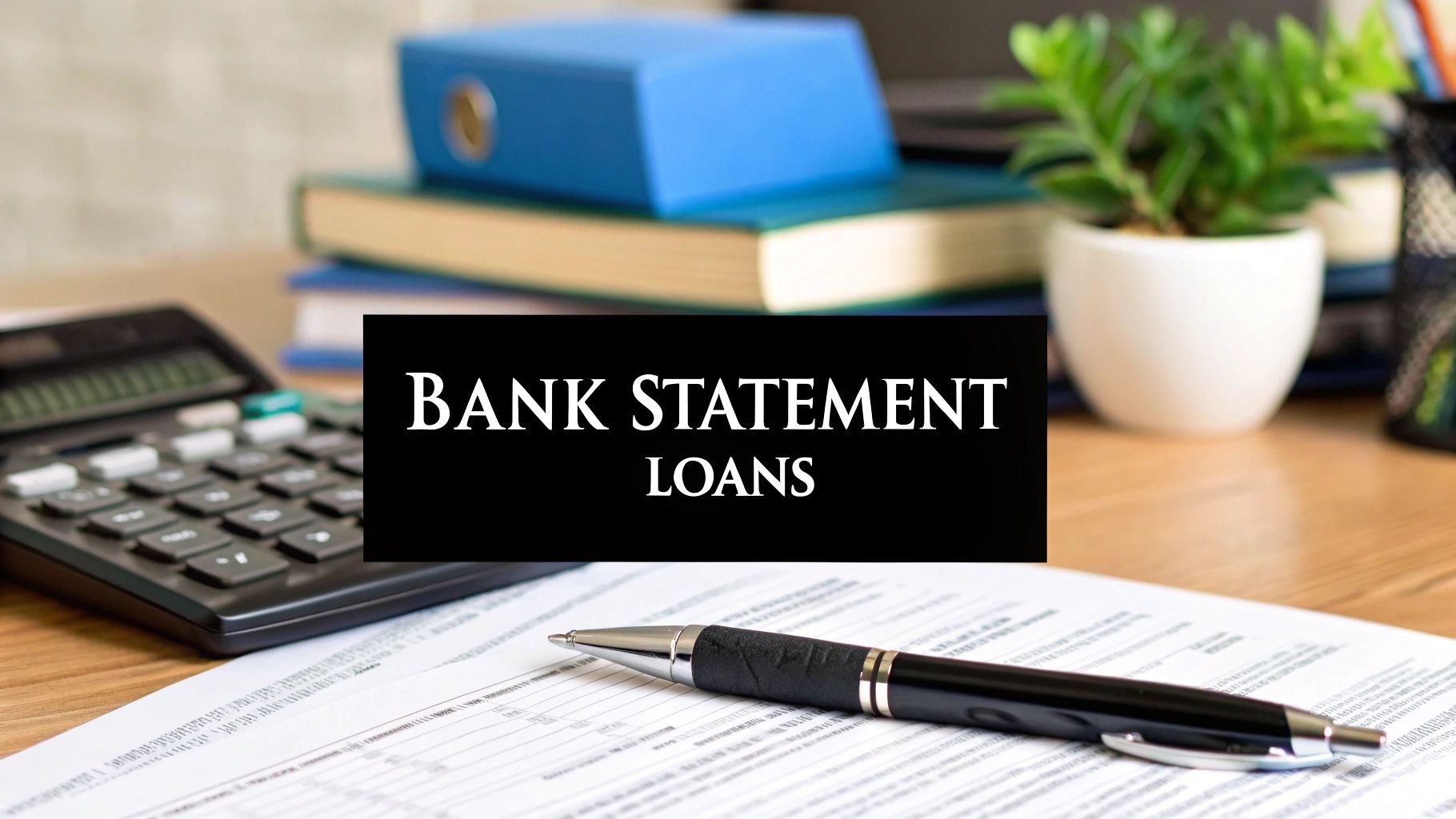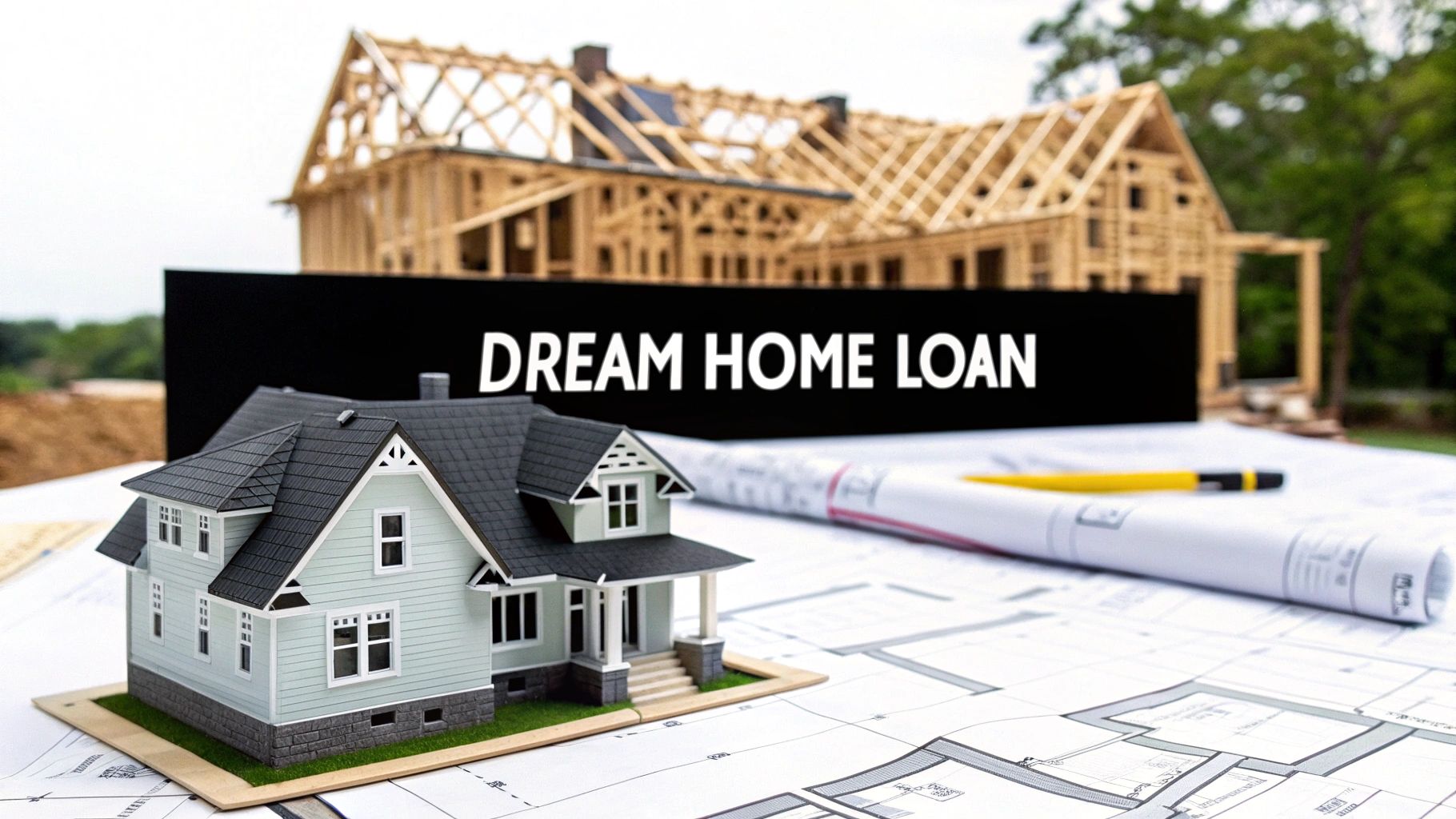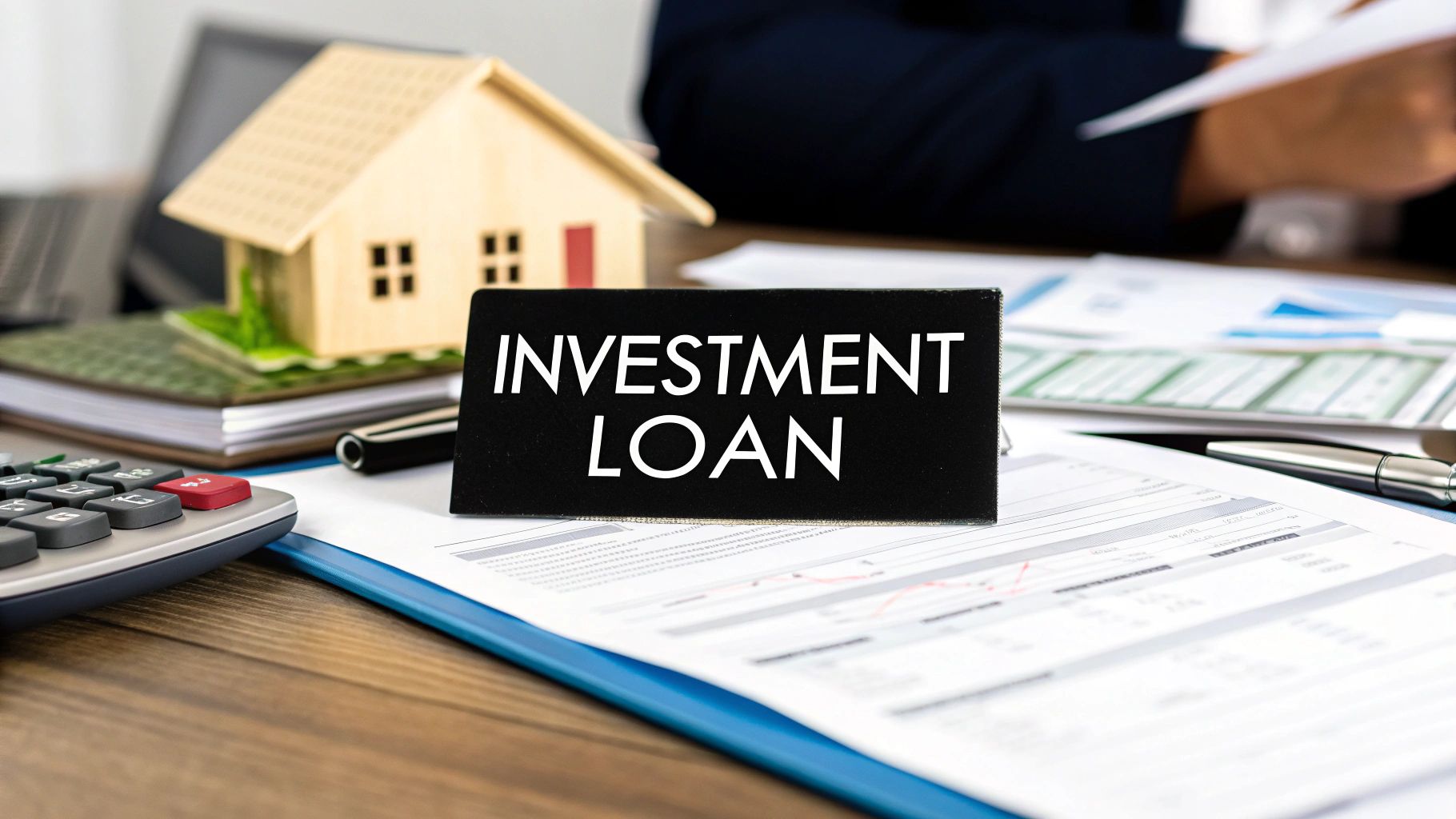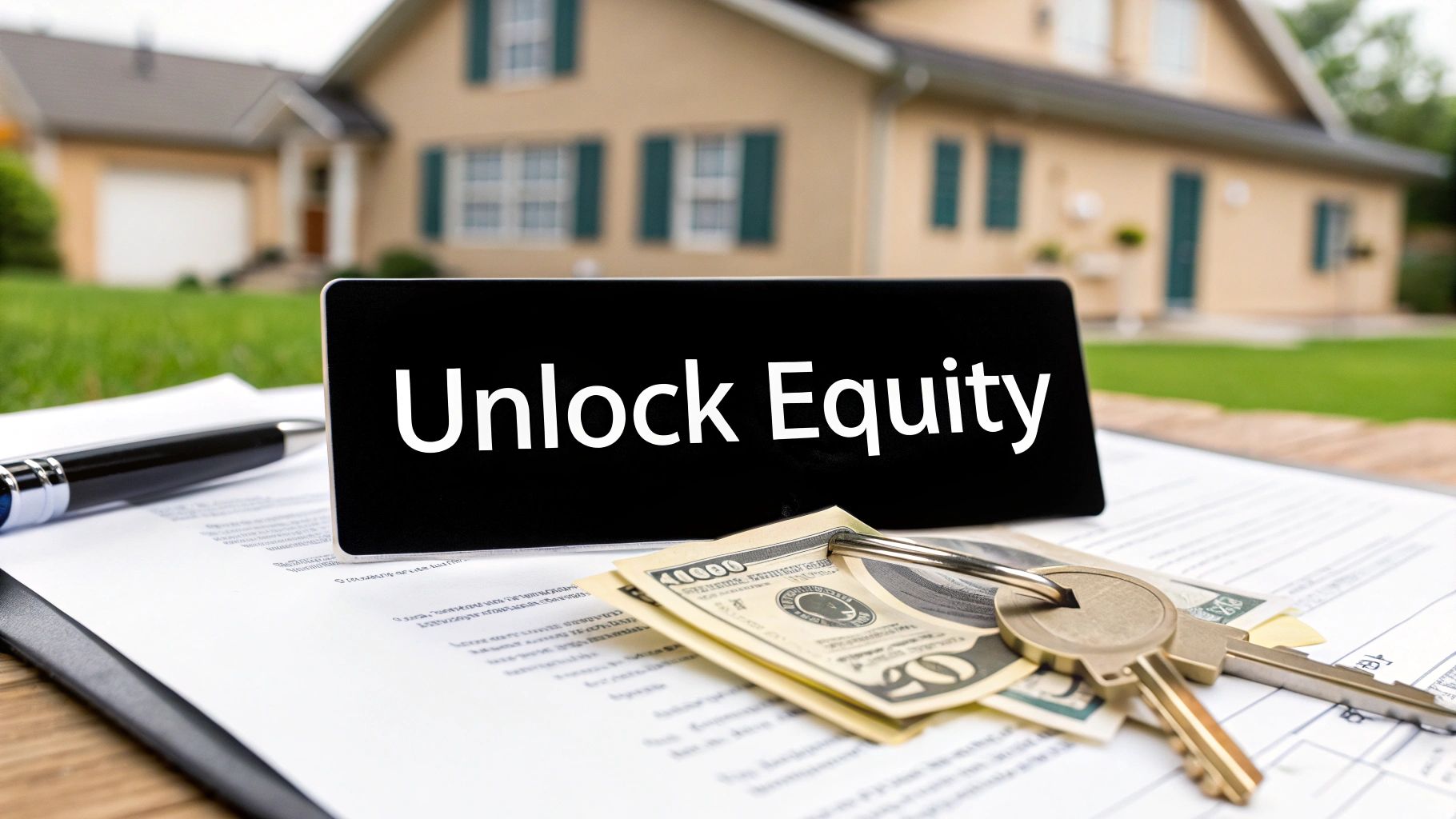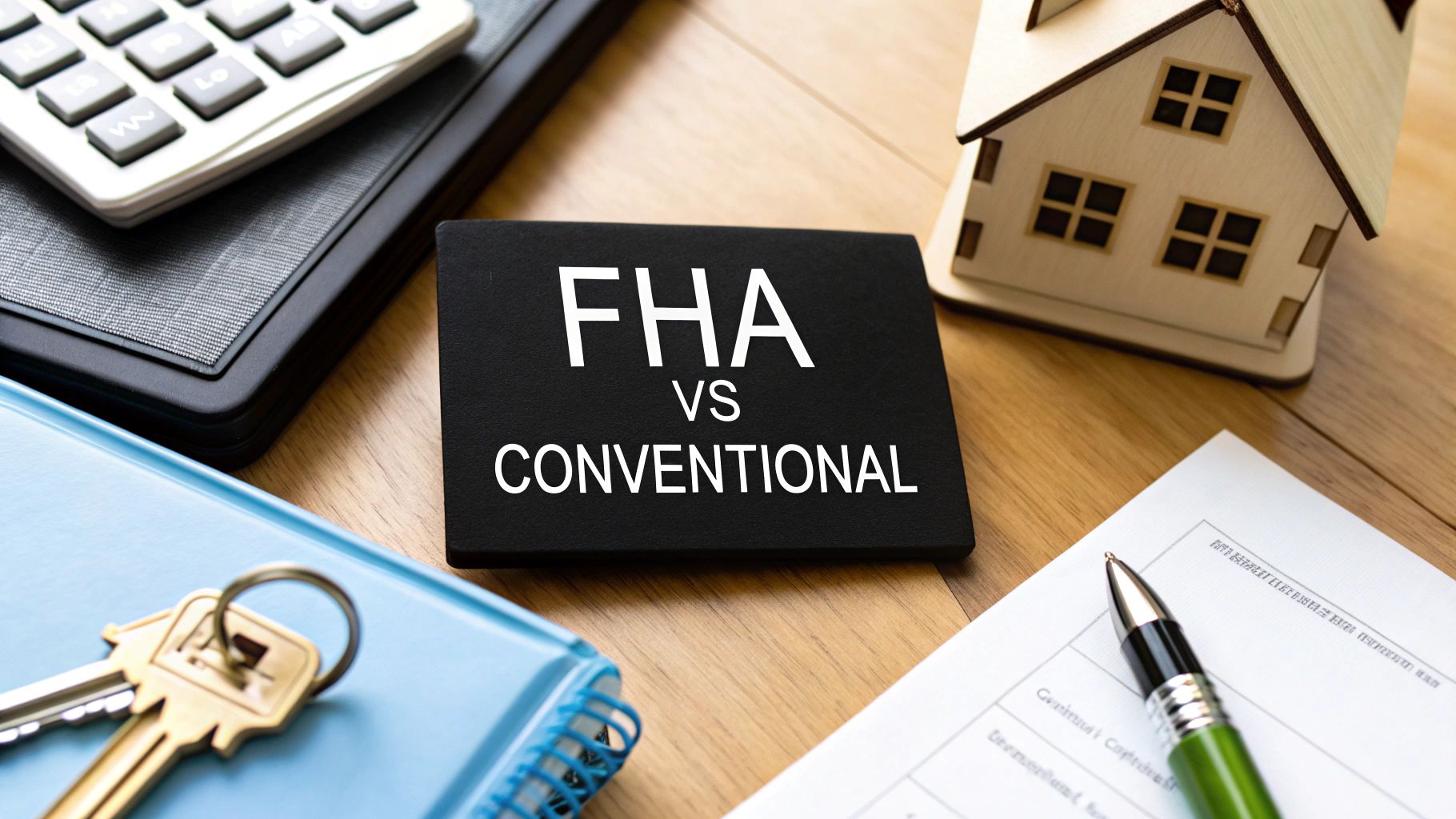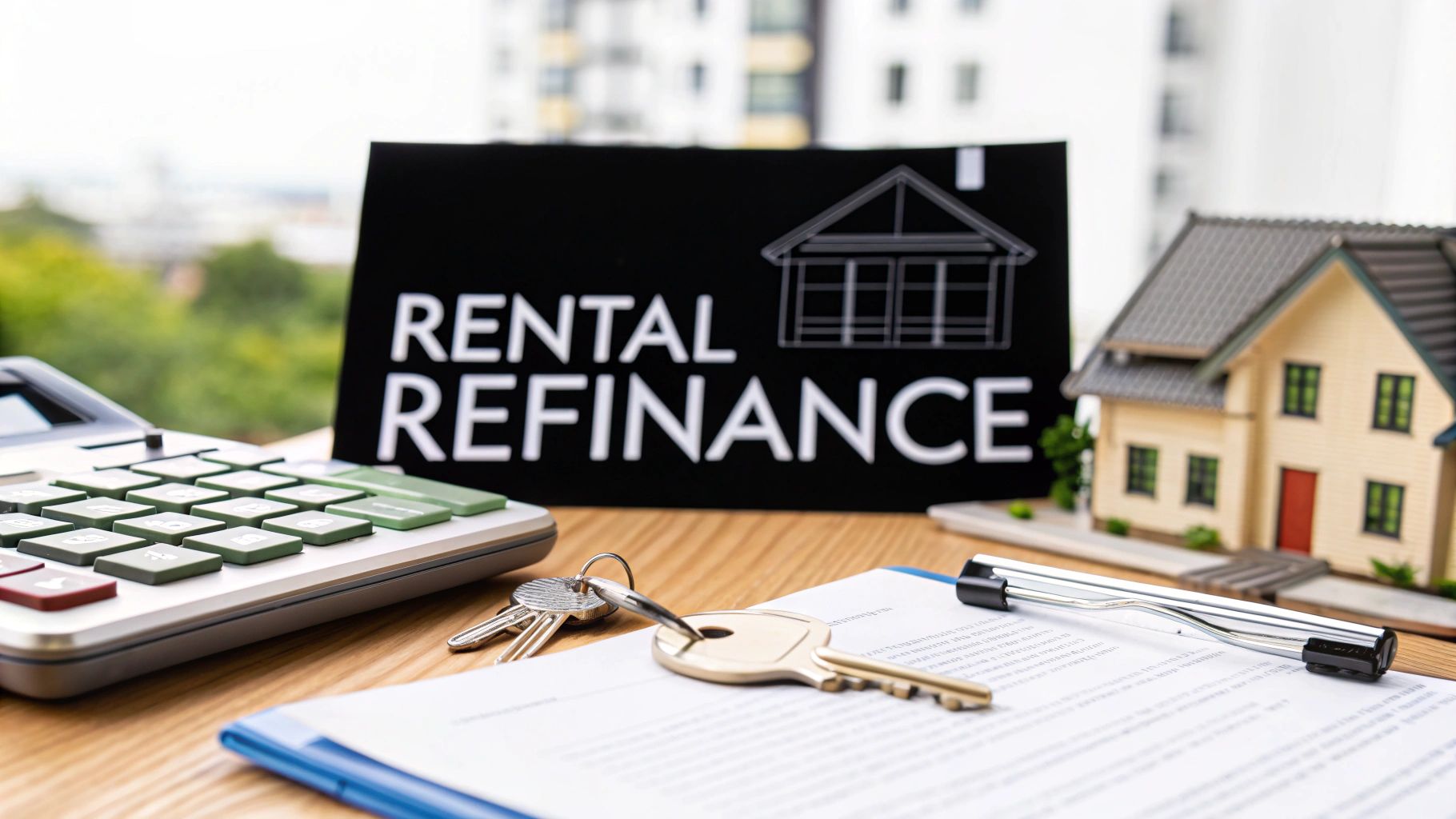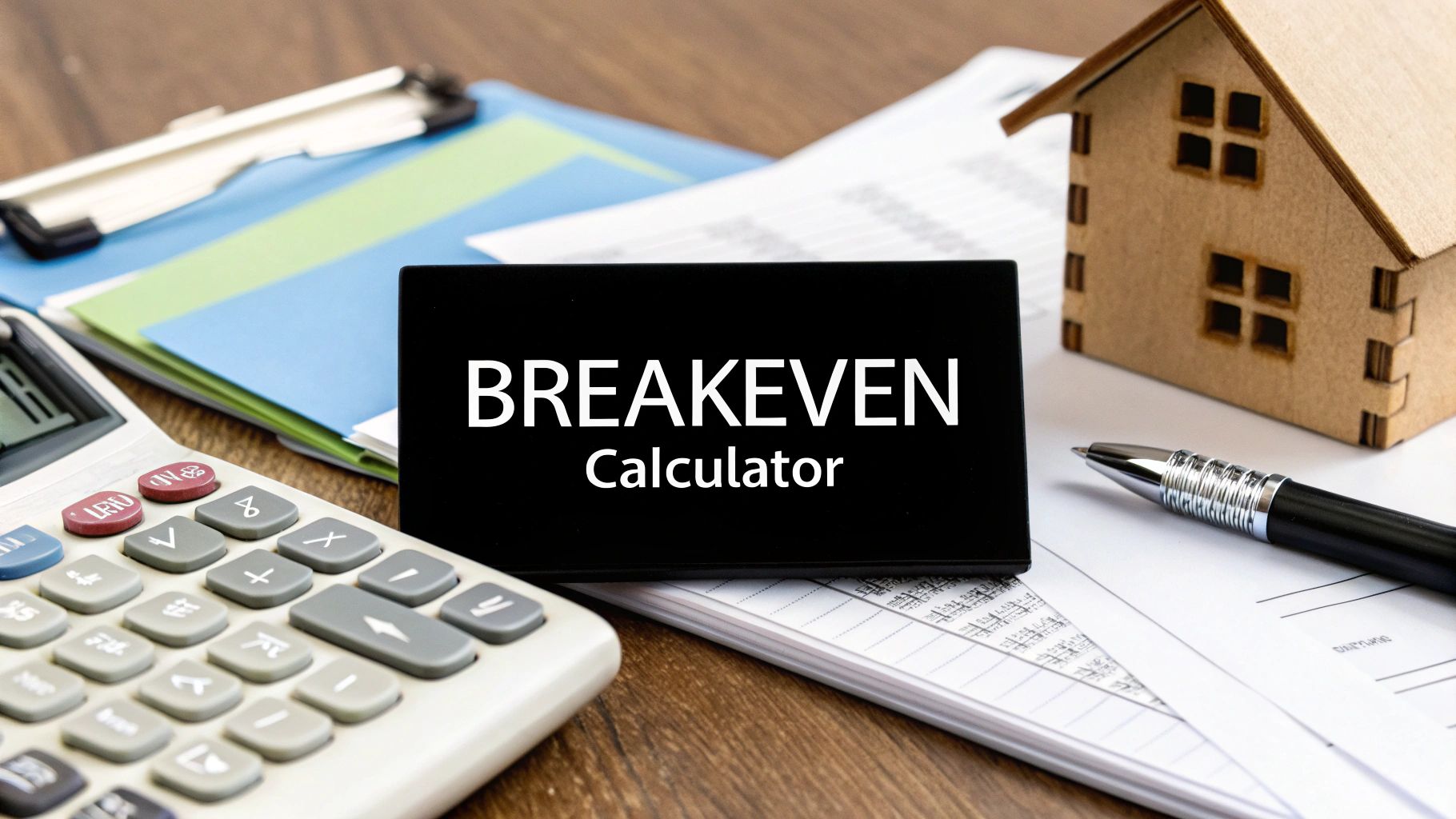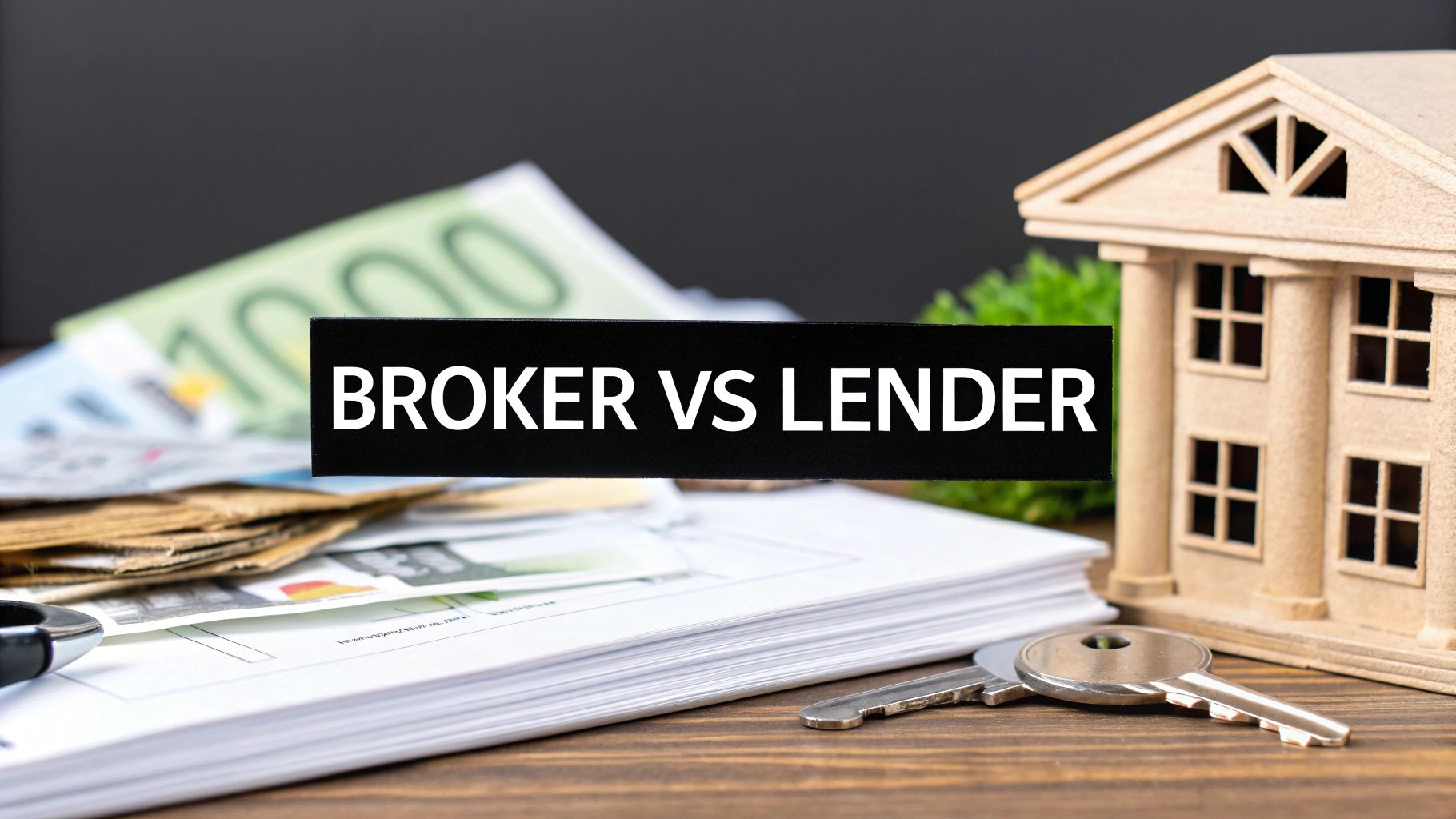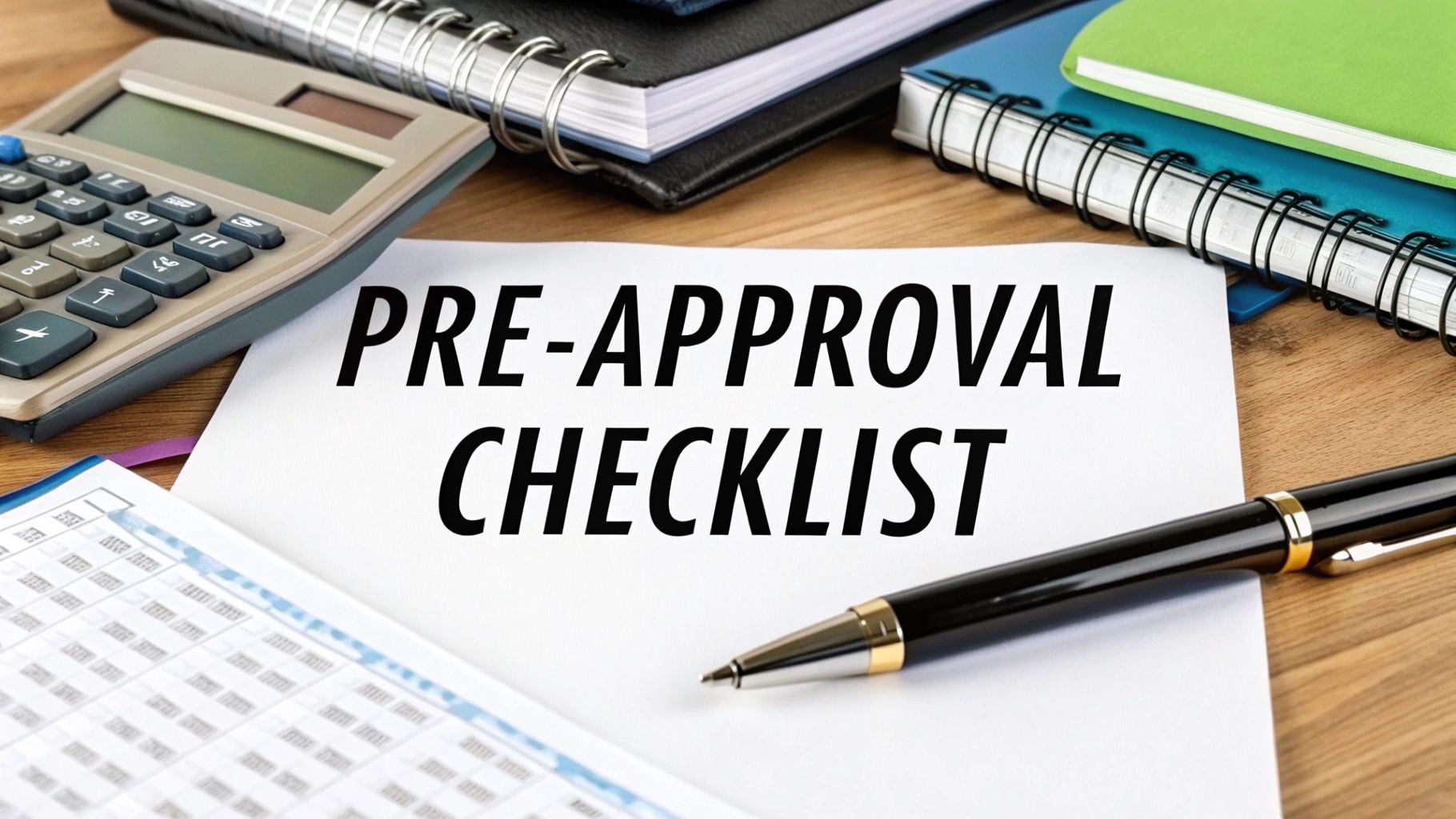ARM vs Fixed - Loan Q&A: Should I Choose a Fixed Rate or an ARM?
ARM vs Fixed - Preguntas sobre préstamos: ¿Debo elegir una tasa fija (Fixed)o una tasa ajustable (ARM)?
ARM vs Fixed - 贷款问答:ARM和Fixed利率应该怎么选
July 25, 2025
Many mortgage applicants ask this question: between a Fixed Interest Rate and an Adjustable-Rate Mortgage (ARM), which one should I choose? Let’s break it down from a few key angles:

ARM vs Fixed - Loan Q&A: Should I Choose a Fixed Rate or an ARM?
Many mortgage applicants ask thisquestion: between a Fixed Interest Rate and an Adjustable-Rate Mortgage (ARM),which one should I choose? Let’s break it down from a few key angles:

1.Risk Preference
Unless there's stagflation (economicstagnation + inflation), ARM rates are generally lower than Fixed rates. Thecritical question is: will this low rate increase after the initial fixedperiod of 5 or 7 years? And by how much?
The truth is, no one can answer thiswith certainty—just like the ups and downs of the stock market cannot beaccurately predicted.
So, if you're more conservative,prefer stability, dislike risk, and worry that the ARM rate might spike afterthe fixed period, a Fixed rate is a better choice.
If you're more comfortable with ratefluctuations, believe rates might stay steady or decline, and have a goodunderstanding of your own risk tolerance, an ARM could be worth considering.
2.Immediate Savings
One clear advantage of an ARM isthat the interest rate during the initial 5 or 7 years is significantly lower.This is a guaranteed and stable benefit—no one can take away this “cheapinterest rate” during that period.
And afterward? Interest rates, likelife, are unpredictable. You may encounter rising education expenses, jobchanges, unstable income, or unexpected events. Since the future is uncertain,why not save on interest now while you can predict it?
Also, if market rates fall duringthe ARM’s fixed period, you may have the opportunity to refinance into a lowerARM (with a new fixed term) or a Fixed loan—depending on the market and yourqualifications at the time.
If we focus only on total interest(not monthly payment pressure):
Say you borrow $500,000. The 7-yearARM starts at 5.75%, and the Fixed rate is 6.5%. If the ARM increases to 7.25%starting from year 8:
- ARM at 5.75%, monthly principal & interest ≈ $2,918 → total interest in 7 years ≈ $192,000
- Fixed at 6.5%, monthly principal & interest ≈ $3,160 → total interest in 7 years ≈ $222,000
So, you save about $30,000 ininterest during the first 7 years with the ARM.
From year 8, if the ARM rises to7.25%, your monthly payment would be about $3,411—around $250 more than theFixed. At that rate, it would take about 10 years (120 months) to “use up” the$30,000 you saved. That’s your break-even point—before then, the ARM ischeaper overall.
3.How Long You Plan to Keep the Home
Generally, Fixed rates are betterfor long-term homeownership. If you’re only planning to stay for a short time,an ARM is likely better.
- If you expect to sell within 5–7 years—due to changing schools, jobs, or states—ARM is a strong fit.
- If you plan to stay 20+ years, a Fixed rate offers more peace of mind.
ARMs are essentially designed asshort-term tools. If you think, “I’ll pay off / sell / refinance in 10 years,”an ARM might save you more. But if you’ll hold the home for 15+ years and don’twant to worry about rate increases, go Fixed.
4.Financial Pressure
The larger the loan amount, thegreater the difference in monthly payments between ARM and Fixed. With a largeloan, you may save $400–$500 per month using an ARM.
For example, with an $800,000 loan,the monthly payment difference could be significant. For families watchingtheir budget, this savings can really ease the burden. If you’re tight on cashflow early on, an ARM could offer welcome relief.
5.The Rate Spread Between Fixed and ARM
Lastly, it all comes down to: howbig is the rate difference?
- If the spread is 1% or more (100 basis points), the ARM is definitely worth a closer look.
- If the spread is 0.5% or less (50 basis points), the difference is small—Fixed may be the safer choice.
- If the spread is between 0.5% and 1%, then consider the earlier factors—your preference, plans, and loan terms—to make a more well-rounded decision.
We hope this article helps you makea smarter, more confident choice when deciding between a Fixed and anAdjustable mortgage rate.
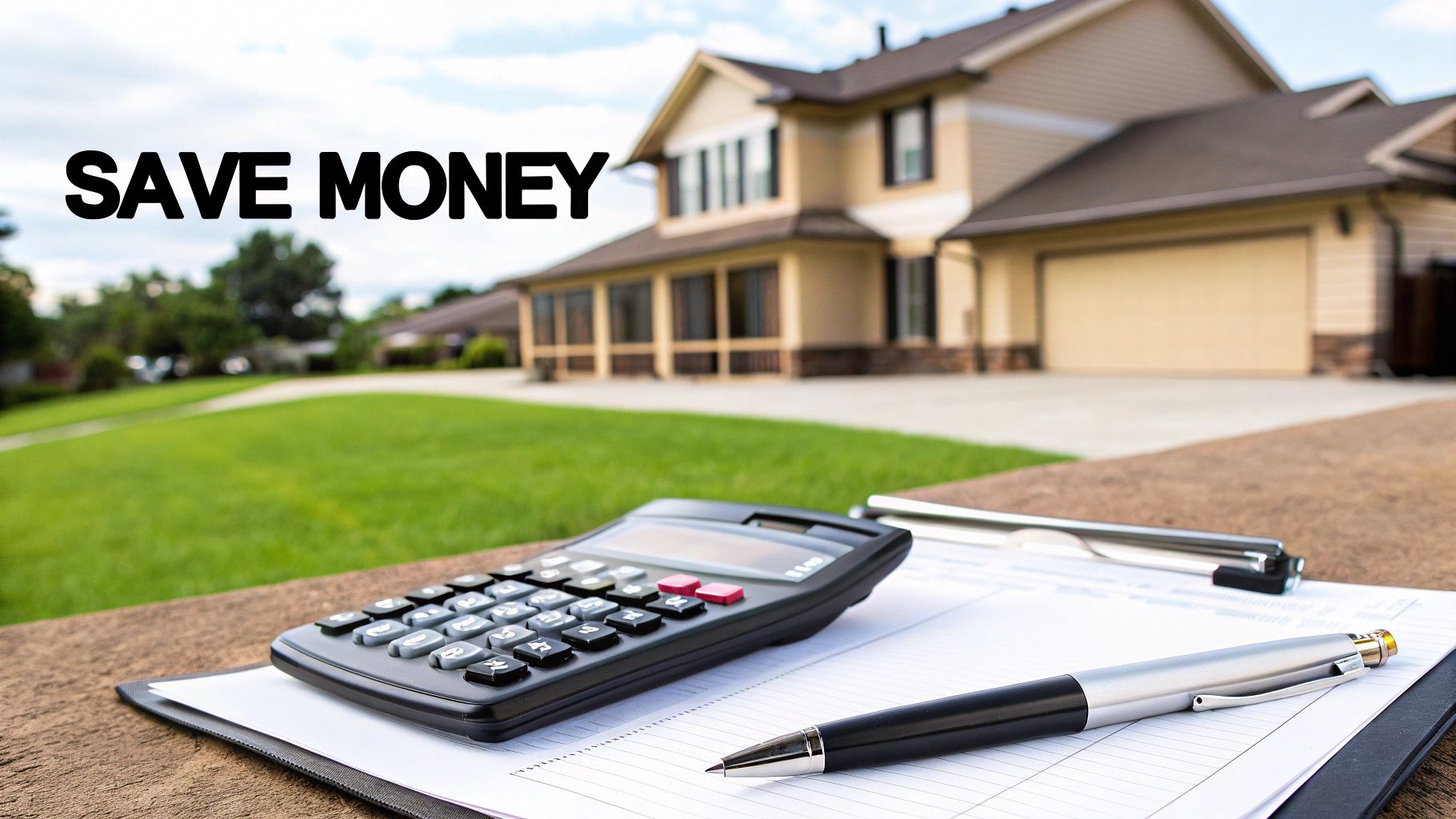
· ARM Adjustable-RateMortgage
· Fixed Fixed-Rate Mortgage
· refinance Refinance (replacing your existing loan)
· break-even point The point where ARM interest catches upto Fixed
· payment Monthly loan payment
· basis points 1% = 100 basis points (used to describe rate spreads)
ARM vs Fixed - Preguntas sobre préstamos: ¿Debo elegir una tasa fija (Fixed)o una tasa ajustable (ARM)?
Muchos solicitantes de hipotecas sehacen esta pregunta: entre una tasa fija (Fixed) y una tasa ajustable (ARM),¿cuál debería elegir? A continuación, te presentamos un análisis desde variosángulos:

I.Preferencia de riesgo
Salvo en casos de estanflacióneconómica, la tasa de interés de una ARM suele ser más baja que la de unaFixed. Entonces, la cuestión clave es: ¿subirá esa tasa más baja después delperiodo fijo de 5 o 7 años? ¿Cuánto subirá? En realidad, nadie puede respondercon certeza a esa pregunta, igual que nadie puede predecir con precisión losaltibajos del mercado bursátil.
Por eso, si eres conservador,prefieres la estabilidad y no te gustan los riesgos, y te preocupa que la tasade la ARM suba mucho después del periodo fijo, entonces te recomendamos elegiruna tasa fija (Fixed).
Si aceptas bien la volatilidad delas tasas y crees que las tasas se mantendrán estables o bajarán, y tienesclaridad sobre tu capacidad de asumir riesgos, entonces puedes considerar unatasa ajustable (ARM).
II.Beneficio inmediato
Una ARM tiene una ventaja clara:durante los primeros 5 o 7 años, la tasa es considerablemente más baja. Este esun beneficio cierto y estable; nadie puede quitarte esa tasa baja durante eseperiodo.
¿Y después? Las tasas, como la vida,son impredecibles. Puede que enfrentes mayores gastos educativos, cambios detrabajo, ingresos inestables o incluso imprevistos. Dado que el futuro esincierto, ¿por qué no aprovechar el ahorro de intereses durante esos primeros 5a 7 años predecibles?
Además, si durante el periodo fijode la ARM las tasas del mercado bajan, podrías refinanciar (refinance) a unaARM con nuevo periodo fijo o a una Fixed más baja, dependiendo del entorno delmercado y tu situación financiera en ese momento.
Y si solo miramos los interesestotales (no las cuotas mensuales):
Supongamos una ARM a 7 años con unatasa del 5.75%, y una Fixed al 6.5%. Si después del año 8 la ARM sube al 7.25%,comparando los intereses:
- ARM a 5.75% por 7 años, pago mensual aprox. $2,918, intereses totales en 7 años: $192,000.
- Fixed a 6.5%, pago mensual aprox. $3,160, intereses en 7 años: $222,000.
Entonces, durante los primeros 7años, la ARM te ahorra aproximadamente $30,000 en intereses.
Si a partir del año 8 la ARM sube al7.25%, con una mensualidad de $3,411, estarías pagando unos $250 más al mescomparado con la Fixed. Para gastar esos $30,000 ahorrados, te tomaría unos 10años ($30,000 ÷ $250 = 120 meses). Es decir, antes de ese punto de equilibrio (break-evenpoint), la ARM sigue costando menos en intereses totales.
III.Duración de propiedad
En general, para propiedades que seplanean mantener a largo plazo, una Fixed es más adecuada. Si planeasmantenerla a corto plazo, una ARM puede ser mejor.
- Si planeas vender en 5 a 7 años (por cambio de distrito escolar, trabajo o estado), una ARM es ideal.
- Si planeas mantener la propiedad por 20 años o más, entonces una Fixed es más apropiada.
La ARM es en esencia una herramientade corto plazo. Si planeas pagar, vender o refinanciar en unos 10 años, una ARMpuede ser más rentable. Pero si tu plan es mantener la casa 15 años o más y noquieres preocuparte por subidas de tasas, la Fixed te dará más tranquilidad.
IV.Presión financiera
Cuanto mayor es el monto delpréstamo, mayor es la diferencia mensual entre ARM y Fixed. En préstamosgrandes, la ARM puede ayudarte a ahorrar $400–$500 al mes, lo cual essignificativo para familias con presupuesto ajustado. Si en las etapasiniciales tienes presión de flujo de efectivo, la ARM puede ayudarte a aliviarese estrés.
V.Diferencia de tasas entre ARM y Fixed
El último factor decisivo es: ¿cuáles la diferencia entre las dos tasas?
- Si la diferencia es ≥ 1% (100 puntos básicos), vale la pena considerar la ARM.
- Si es ≤ 0.5% (50 puntos básicos), la diferencia es pequeña, mejor elegir la Fixed para mayor seguridad.
- Si está entre 0.5% y 1%, entonces hay que evaluar en conjunto los factores anteriores para tomar una decisión más personalizada.
Esperamos que este artículo te ayudea tomar una decisión más informada y segura cuando te enfrentes a la elecciónentre una tasa fija (Fixed) y una tasa ajustable (ARM).

· ARM Préstamo de tasa ajustable
· Fixed Préstamo de tasa fija
· refinance Refinanciar
· break-evenpoint Punto de equilibrio
· payment Pago / cuota mensual
· basispoints Puntos básicos (1% = 100 bps)
ARM vs Fixed - 贷款问答:ARM和Fixed利率应该怎么选
很多房贷申请人都在问这样一个问题:固定利率(Fixed)和浮动利率(ARM),我究竟应该选哪一个呢?下面从几个角度,简单地给大家分析一下:

一. 风险偏好
除非是发生经济滞胀,否则ARM的利率通常会比Fixed的要低。那么关键问题是:这个低利率在5年或7年的固定期过了以后会不会涨?会涨多少?事实上没有人能够肯定地回答这个问题,就像股票市场的涨跌无法被人完全准确预测一样。
所以说,如果你比较保守,喜欢踏实,不喜欢有风险的事情,担心ARM利率在固定期过了以后会涨得很厉害,那么建议你选择固定利率(Fixed);
如果你对利率波动心理接受度比较高,而且认为利率可能维持平稳或下降,对自己的风险承受能力有清晰判断,那也可以考虑选择浮动利率(ARM)。
二. 既得利益
ARM有一个明显的好处:至少前5年或7年的利率会低很多。这是个确定的、稳定的好处,也就是说没有人可以把这段前5到7年的“便宜利率”从你手中抢走。
那么之后呢?利率就像生活——无法预测。你可能遇到教育支出增加、换工作、收入不稳定,甚至意外情况。既然未来不确定,为什么不在可以预测的5~7年内先把利息省下来呢?
再者,ARM的利率如果在固定期内遇到整体市场利率下降的情况,你是有机会再refinance成一个更低的ARM(固定期重算)或Fixed贷款的。当然,这也要看当时的市场环境和你自身条件是否允许。
另外,如果我们不考虑每月还款压力,只看总利息:
假设7年ARM前期利率是 5.75%,Fixed是6.5%,而ARM在第8年后涨到了7.25%。通过计算,总会有一个break-even point(盈亏平衡点),在那之前ARM的总利息支出仍然低于Fixed。
举个例子(按$500,000贷款金额粗略估算):ARM的固定期利率是5.75%(7年固定),Fixed是6.5%。如果ARM在第8年开始每年上涨,最终达到7.25%,而Fixed利率全程保持6.5%不变。那么:
前7年ARM利率5.75%,每月本息大约 $2,918,7年总利息约 $192,000。
Fixed利率6.5%,每月本息大约 $3,160,即7年总利息约$222,000。
则用ARM前7年可以节省下约 $30,000 的利息。
假设从第8年开始,如果ARM上升到7.25%,每月本息约 $3,411,比Fixed贵了约 $250/月,按这个差额继续走下去,大概3年左右(第10年)才会把之前节省的利息“用完”($30,000 ÷ $250 = 120个月)。也就是说,在这个break-evenpoint(盈亏平衡点)之前,ARM付出的总利息还是更少的。
三. 持房时间
一般来说,长期持有的房子Fixed的利率比较好;如果是短期持有,那么还是ARM利率好。
· 如果你打算5-7年内卖房子,比如换学区、换工作、换州居住,那就非常适合选择ARM;
· 如果你明确会长期持有,比如20年起步,那选择Fixed更合适。
ARM本质上是适合短期使用的工具。所以,如果你觉得“我10年左右会还清/卖房/再贷款”,那么ARM可能更划算;如果你计划长期持有15年以上,而且又不想被任何涨息影响,那么还是选Fixed更省心。
四. 生活压力
贷款金额越大,ARM和Fixed的月供差距越明显。越是高额贷款,ARM每个月能够节省的payment就越多。
比如某笔贷款金额是 $800,000,那么ARM与Fixed月供可能相差$400~$500,这对日常支出紧张的家庭来说,是一笔不错的缓解。如果你在前期现金流压力较大、想节省开支,可以考虑ARM,会比Fixed压力小一些。
五.Fixed利率和ARM利率的利差
最后一个决定因素就是:两种利率之间究竟差多少?
1.利差 ≥ 1%(100 basis points)时,ARM还是 很值得考虑的。
2.利差 ≤ 0.5%(50 basis points)时,利率差距较小,建议直接选Fixed,图个稳;
3.利差在 0.5%-1% 之间时,就需要结合前面几个因素,参考个人偏好和具体贷款产品细则来多方面综合判断哪种利率更适合。
希望本文能让你在面对 ARM 和 Fixed 利率的选择时,做出更明智、自信的决策。

· ARM 浮动利率贷款
· Fixed 固定利率贷款
· refinance 重贷
· break-even point 盈亏平衡点
· payment 还款 / 月供
· basis points 基点(1% = 100个基点)













Get in touch with a loan officer
Our dedicated loan officers are here to guide you through every step of the home buying process, ensuring you find the perfect mortgage solution tailored to your needs.
Check If your eligible
Options
Exercising Options
Selling
Quarterly estimates
Loans
New home

Stay always updated on insightful articles and guides.
Every Monday, you'll get an article or a guide that will help you be more present, focused and productive in your work and personal life.


